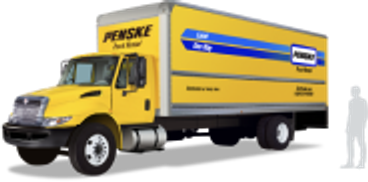Moving Plants When Moving Homes: A How-To Guide

Moving to a new home is an exciting adventure but it can also be stressful, especially when it comes to transporting your beloved houseplants. Whether you’re an avid plant person or just have a few green friends, ensuring they arrive safely at your new home requires special care. Here’s a comprehensive guide to help you move your potted plants without a hitch.
Preparing Your Plants for the Move
- Prune and Clean: About a week before moving, prune your plants by removing dead or excess leaves and branches. This not only makes the plants easier to transport but also helps them recover from any damage.
- Water: Water your plants thoroughly two to three days before moving day. This ensures they are hydrated but not overly wet, which could make the pots heavier and messier to handle.
- Check for Pests: Inspect your plants for any signs of pests or diseases. Treat any issues well in advance of your move.
- Repot if Necessary: If your plants are in fragile or oversized pots, consider repotting them into plastic containers. Plastic pots are lighter and less likely to break. Ensure the new pots have adequate drainage to prevent root rot during the move.
Packing Tips and Tricks
- Sturdy Containers: Use sturdy boxes or plastic containers to hold your plants. Ensure the boxes are large enough to hold the pots securely but not too large that plants can move around and get damaged. For smaller plants, fill any gaps with packing paper or bubble wrap to keep them secure within the box, and ensure all closed boxes have holes for air circulation.
- Protect the Plants: Wrap the pots in plastic bags to prevent soil spillage. Secure the base of the plants with bubble wrap, newspaper or old grocery bags to protect the stems and leaves. For tall plants, consider using plant stakes to prevent them from bending or breaking, then wrap a cut garbage bag around the plant to secure branches in place.
- Labeling: Clearly label each box with “FRAGILE,” “LIVE PLANTS” and “THIS SIDE UP” to ensure careful handling. Including the types of plants and where each box should be placed can also help with putting them in the right spot upon arrival.
Loading Plants Into the Truck
- Stable Placement: Place the boxes in a stable position within the moving truck where they won’t tip over. Avoid stacking heavy items on top of them or placing them directly under heavy furniture or boxes that might shift during transit.
- Secure the Load: Use straps or bungee cords to secure the boxes, preventing them from shifting during transit.
- Heavy Lifting: Hand trucks aren’t just helpful for moving heavy boxes and appliances. Using a hand truck will also allow you to safely load heavy potted plants into the back of your moving truck.
- Minimize Truck Time: Load the plants last and unload them first to minimize their time in the truck.
Special Considerations for Long-Distance Moves
- Temperature Control: Plants are sensitive to extreme temperature changes. If you’re moving during very hot or especially cold times of the year, consider transporting delicate plants in your personal vehicle, where the temperature can be controlled. For larger plants, consider wrapping them in blankets or sheets to protect them from below-freezing temperatures.
- Light Exposure: If your journey takes more than a day, ensure your plants get some light exposure.
- Watering: If your trip is particularly long, you may want to consider keeping water on hand to ensure your plants stay hydrated throughout the trip.
Moving Plants Across State Lines: Regulatory Considerations
- Check Regulations: Before you move, especially across state lines, it’s essential to research any regulations regarding plant transportation. Some states have strict rules to prevent the spread of pests and diseases, so know before you go. Visit the USDA’s Animal and Plant Health Inspection Service website for specific state requirements or contact the State Plant Regulatory Official in the states where you will travel to inquire about potential restrictions on the specific houseplant species you wish to bring to that state.
- Obtain Necessary Permits: If required, obtain the necessary permits or certificates. Some states may require a certificate of inspection or a plant health certificate. Obtain these documents well in advance of your move to avoid delays. These can usually be obtained from your local agricultural department or extension office.
- Avoid Restricted Plants: Be aware of any restricted or prohibited plant species. Transporting these could result in fines or the confiscation of your plants.
- Inspection Stations: Be prepared for possible inspections at state borders. Having your plants in good health and free of pests will help you pass these checks smoothly.
Upon Arrival
- Unpacking: Carefully unpack your plants as soon as you can and inspect them for any damage. Remove any wrapping or packaging materials.
- Monitor for Stress: Moving can stress plants. Keep an eye out for signs of stress such as wilting, yellowing leaves or stunted growth. Provide extra care, including proper watering and light, to help them adjust.
- Watering and Care: Water the plants as needed and provide any necessary care to help them adjust to their new home.
Moving houseplants requires a bit of extra effort, but with the right preparation and care, you can ensure they thrive in your new home. By following these tips, you can ensure that your plants arrive safely and continue to bring joy and beauty to your new space.

You've decided to move. Now what? We have the planning, packing, loading, and driving tips you need to make your move a success.
Explore NowRecent Articles












